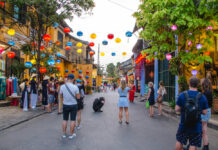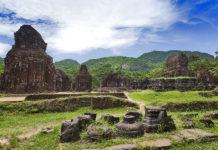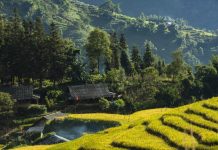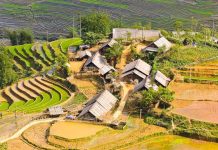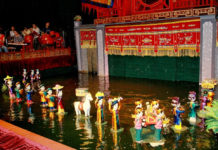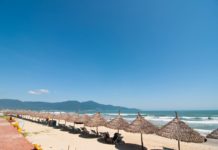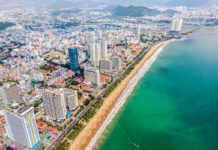Vietnam is a country with a diverse climate, influenced by both tropical monsoons and its range of altitudes and latitudes. Depending on where and when you travel, you may experience different weather conditions, from cool and misty to hot and humid. In this article, we will provide you with some general information and tips on the weather in Vietnam, as well as the best time to visit each region.
North Vietnam
North Vietnam includes the capital city of Hanoi, the mountainous areas of Sapa and Ha Giang, and the famous Halong Bay. The weather in this region is characterized by four distinct seasons: spring, summer, autumn, and winter.
- Spring (February to April): This is a pleasant time to visit North Vietnam, as the weather is mild and dry, with temperatures ranging from 15°C to 20°C (59°F to 68°F). The flowers are in bloom and the rice terraces are green and lush. However, this is also the peak tourist season, so expect higher prices and crowds.
- Summer (May to August): This is the hottest and wettest season in North Vietnam, with temperatures reaching up to 35°C (95°F) and frequent thunderstorms. The humidity can be oppressive and the air quality can be poor. This is not the best time to visit the mountainous areas, as the roads can be slippery and the views can be obscured by fog. However, this is a good time to enjoy the beaches and islands of Halong Bay, as the water is warm and clear.
- Autumn (September to November): This is another ideal time to visit North Vietnam, as the weather is cool and dry, with temperatures ranging from 17°C to 25°C (63°F to 77°F). The sky is clear and the sun is gentle, creating a golden hue over the landscape. This is the best time to see the rice harvest in the mountains and the changing colors of the leaves in the city.
- Winter (December to January): This is the coldest season in North Vietnam, with temperatures dropping to as low as 10°C (50°F) or even below in the mountains. The weather can be cloudy and misty, creating a romantic atmosphere in Hanoi and Halong Bay. However, this is also the time when the north-east monsoon brings strong winds and rough seas, making some activities such as kayaking and cruising unsafe or unavailable.
Central Vietnam
Central Vietnam includes the historical cities of Hue and Hoi An, the coastal city of Da Nang, and the highlands of Dalat and Kon Tum. The weather in this region is influenced by two monsoons: the south-west monsoon from April to September, and the north-east monsoon from October to March.
- South-west monsoon (April to September): This is the dry and hot season in Central Vietnam, with temperatures ranging from 25°C to 35°C (77°F to 95°F). The sun is shining and the sea is calm, making this a great time to enjoy the beaches and the water activities. However, this is also the time when the typhoons can hit the coast, bringing heavy rain and strong winds, especially in August and September.
- North-east monsoon (October to March): This is the wet and cool season in Central Vietnam, with temperatures ranging from 18°C to 24°C (64°F to 75°F). The rain can be persistent and the sky can be overcast, making the sightseeing less enjoyable. However, this is also the time when the festivals and cultural events are held, such as the Lantern Festival in Hoi An and the Tet (Lunar New Year) celebrations in Hue.
South Vietnam
South Vietnam includes the largest city of Ho Chi Minh City, the Mekong Delta, and the islands of Phu Quoc and Con Dao. The weather in this region is more consistent and tropical, with only two seasons: dry and wet.
- Dry season (November to April): This is the best time to visit South Vietnam, as the weather is warm and sunny, with temperatures ranging from 25°C to 32°C (77°F to 90°F). The humidity is low and the rain is rare, making this a perfect time to explore the city, the countryside, and the islands. However, this is also the busiest tourist season, so expect higher prices and crowds.
- Wet season (May to October): This is the rainy season in South Vietnam, with temperatures ranging from 27°C to 35°C (81°F to 95°F). The rain can be heavy and frequent, especially in the afternoon and evening, causing floods and traffic jams. However, the rain can also bring relief from the heat and create a fresh and green environment. This is a good time to visit the Mekong Delta, as the water level is high and the fruit is abundant.
Tips for Travelers
- The weather in Vietnam can vary greatly depending on the region and the season, so it is advisable to check the weather forecast before you travel and pack accordingly. A general rule of thumb is to bring layers of clothing that can be easily added or removed, as well as a raincoat or umbrella for the rainy days.
- The weather in Vietnam can also change quickly and unexpectedly, so it is important to be flexible and adaptable with your travel plans. You may need to reschedule or cancel some activities due to the weather conditions, such as cruises, treks, or flights. It is recommended to book your accommodation and transportation in advance, but also to have a backup plan in case of any changes.
- The weather in Vietnam can also affect your health and comfort, so it is essential to take care of yourself and prevent any illnesses or injuries. You should drink plenty of water and avoid dehydration, especially in the hot and humid seasons. You should also wear sunscreen and a hat to protect yourself from the sun, and insect repellent to avoid mosquito bites, especially in the wet and rural areas. You should also be aware of the signs and symptoms of heatstroke, such as headache, nausea, dizziness, and confusion, and seek medical attention if needed.

